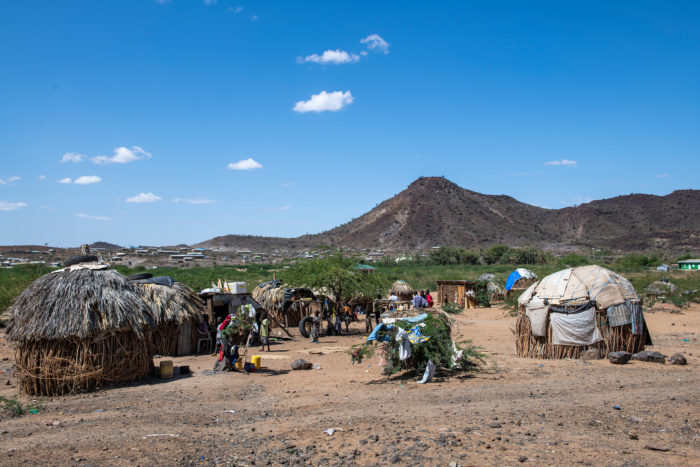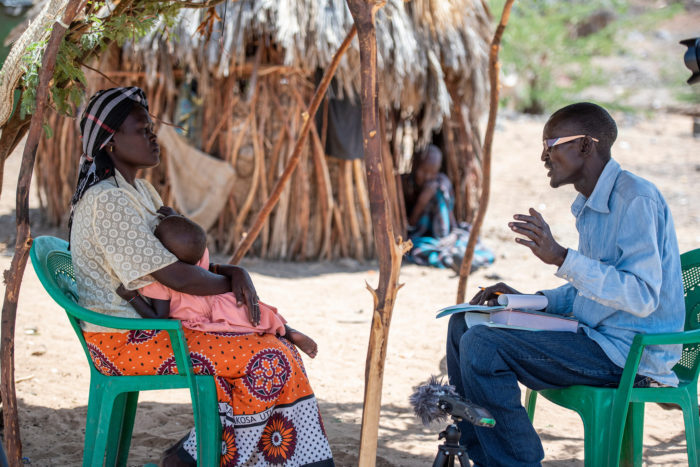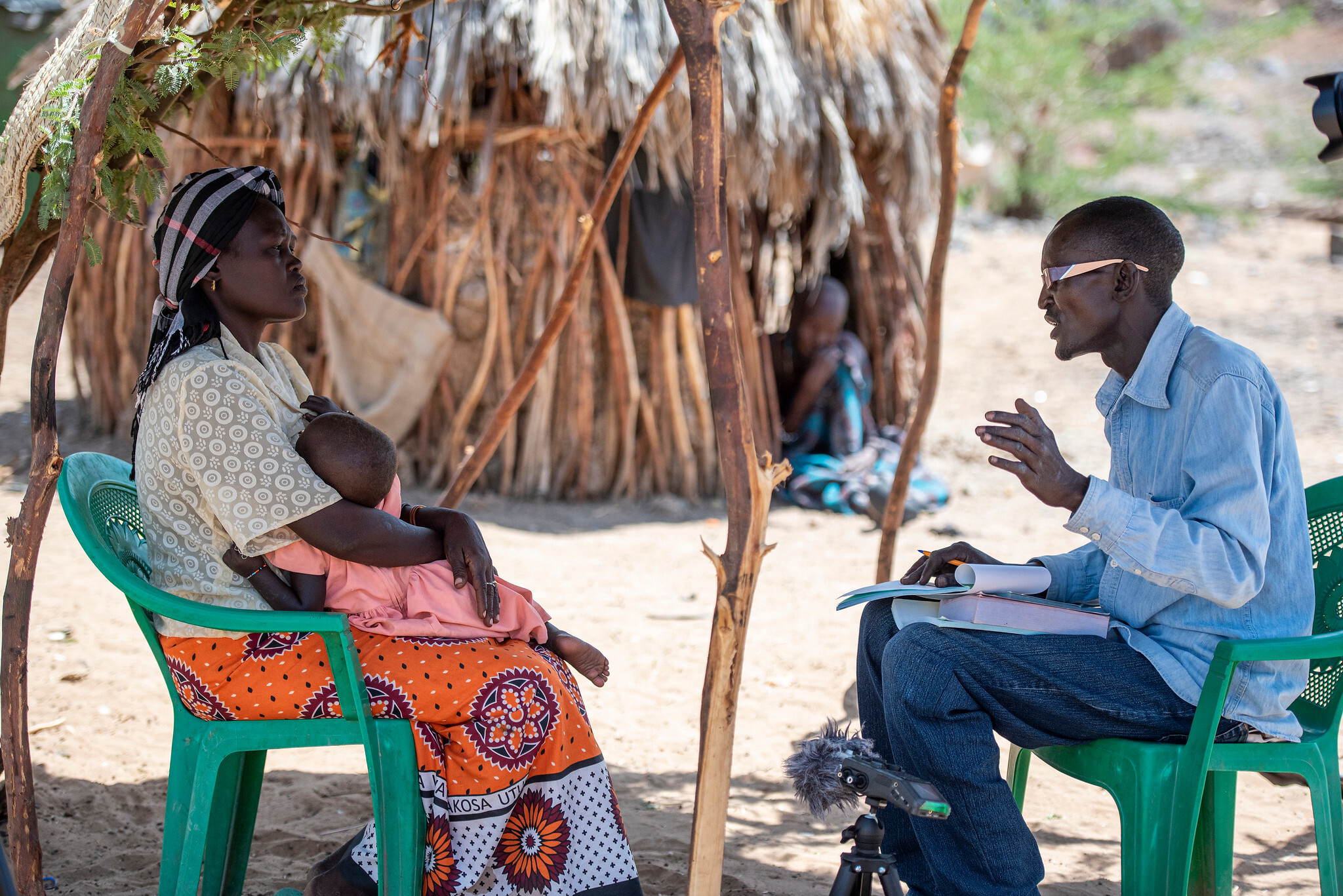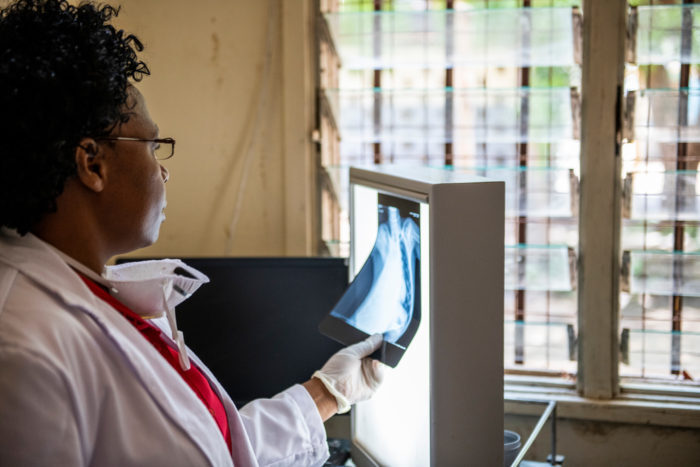 Abraham Napuu is visiting a household on the outskirts of Lodwar, the capital of Turkana County in northern Kenya. Turkana is a semi-arid region, largely populated by pastoralists who move frequently in search of grazing grounds for their livestock.
Abraham Napuu is visiting a household on the outskirts of Lodwar, the capital of Turkana County in northern Kenya. Turkana is a semi-arid region, largely populated by pastoralists who move frequently in search of grazing grounds for their livestock.
Locating children infected with TB is particularly challenging. The average distance to a health center is 50 km—usually covered by foot. Traditional homes are constructed of sticks and daub, with the family sharing a tight communal space, which magnifies the possibility of one family member transmitting TB to another.
Locating children infected with TB is particularly challenging.
 Abraham is a community health volunteer with Catalyzing Pediatric Tuberculosis (CaP TB), a project funded by Unitaid and implemented by the Elizabeth Glaser Pediatric AIDS Foundation (EGPAF).
Abraham is a community health volunteer with Catalyzing Pediatric Tuberculosis (CaP TB), a project funded by Unitaid and implemented by the Elizabeth Glaser Pediatric AIDS Foundation (EGPAF).
Today, he’s visiting a family compound accessible by a sandy path in Kalawase Township. “The matriarch of the home tested positive for TB at [Lodwar County Referral Hospital],” explains Abraham. “And when we identify a patient with TB, we need to go to their homes and screen their family members, because they too could be infected with the disease.” This method of home visit is called “index contact tracing.”
According to Abraham, caregivers often confuse the symptoms of TB in their children for a normal cough. So along with facilitating TB screenings, community health volunteers use the home visit to educate the caregivers about the disease. They also help the households implement TB-prevention strategies, such as ventilating the home properly and developing a habit of washing hands frequently.
Along with facilitating TB screenings, community health volunteers use the home visit to educate the caregivers about the disease.
“If we find a child who is less than 5 years old in the home and tests positive for TB, we give them medication,” says Abraham, who adds that community health volunteers also refer adults to TB testing and treatment as needed.
“We are under-reporting TB in children,” says John Kiong’a, M.D., the clinical officer at Lodwar County Referral Hospital. Kiong’a points out that it is crucial to identify children who have come in contact with TB because they have a developing immune system, which makes them vulnerable to contracting the disease.
Children are at additional risk because they lack the ability to cough up enough of a sample to properly diagnose TB. Through CaP TB, clinicians are trained to collect samples via gastric lavage—which leads to an accurate TB diagnosis in children.
Back at the family compound, Abraham holds an education session and checks on all of the children. He sees no apparent sign of TB in the household, but he makes transportation arrangements so that the children can be brought to the hospital to be screened for TB.
All children who come to the hospital are screened, regardless of what they come in for. The combination of better diagnostic tools and community health volunteers means that almost twice as many children with TB are now being identified since the beginning of the CaP TB project.
“Through this program, we have been able to screen more clients, save more lives, and initiate children and their family relations on treatment,” says Kiong’a.
Through this program, we have been able to screen more clients, save more lives, and initiate children and their family relations on treatment. John Kiong’a





